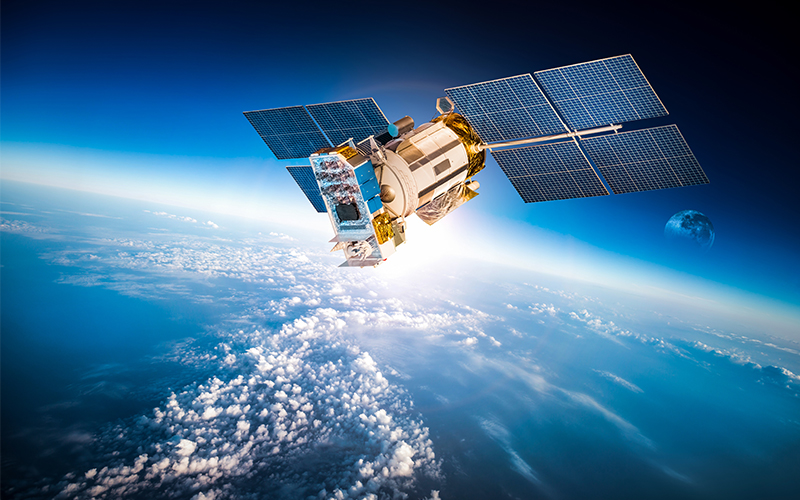Geospatial Data Services
Integrating IoT in GIS futuristic use cases
A couple of decades ago, could you have imagined an intelligent device that allows you to determine the traffic congestion on a particular street and the estimated travel time from the comfort of your home before you even stepped out? Or open the door without a key? To most of us, it never occurred!
While the former relates to Geographic Information Systems (GIS), the latter refers to IoT (internet of things). Both have benefitted the world and have become an integral part of our lives. However, how about leveraging their combined power to build the future? Let’s explore the possibilities.*
A combination of IoT and GIS
IoT is a collection of devices that collaborate to transmit data and perform various tasks without human intervention. Apart from the door lock example mentioned earlier, some of IoT’s existing applications include intelligent personal assistants, video doorbells, smart farming, etc. The basic idea is to enhance efficiency through interconnected devices.
On the other hand, GIS is a location-related technology that analyses and displays geographically referenced information and uses unique location data.[3] The most straightforward example of GIS is tracking a pizza delivery or an online shopping order. However, GIS also helps perform complex studies concerning environmental trends, weather patterns, rainfall, etc.
Future applications of IoT and GIS integration
While we know what IoT and GIS can do individually, the world is now looking to use their integrated capabilities to enhance lives and build a future-proof tomorrow. Let’s look at a few of the examples.
- Smart cities
- Natural disaster management
- Smart buildings
A smart city is more than a buzzword these days. One of the most essential requirements for a smart city is data. Installing IoT sensors on highways, buildings, and vehicles can help gather substantial amount of real-time data for analysis. Together, IoT and GIS can transmit location and data concerning emergencies, monitor air and noise pollution levels, warn drivers of road conditions, optimise public transport routes through analytics, etc.
Continuous and consistent real-time data can enable enhanced smart city planning. It can make cities safer through threat detection and real-time relay of data relating to emergencies. Optimisation of transport routes and advanced alerts enhance overall living comfort.
While you cannot control the occurrence of a natural disaster, you can use IoT and GIS to prepare for it. Municipal corporations can use IoT and GIS data to simulate and analyse the potential impact of natural disasters. Digital twin technology is a great contributor to smart cities. It has also proven to be effective for disaster mitigation. For instance, government bodies can generate hurricane simulations to determine the primary hurricane risk assessments in vulnerable areas, plan accordingly, and make informed decisions concerning building designs.
A smart building is another significant area where IoT and GIS can work wonders. Here, ‘smart’ refers to many aspects, with energy optimisation being one of them. IoT and GIS allow building managers to optimise energy use. Installing IoT sensors on a building’s exterior can help determine the amount of heat and ventilation the building receives. On the other hand, sensors installed inside the building can measure relative humidity, temperature, noise levels, etc. The data gathered can help determine energy usage during different times, identify energy-saving and cost-saving opportunities, and formulate strategies that can help optimise the use of energy.
How can Infosys BPM help?
Leverage the integrated capabilities of IoT and GIS for better planning, efficiency, and optimisation of your business. The geospatial data services from Infosys BPM are well-suited for industrial applications in sectors such as mining, energy, telecom, and navigation. We use digital technology to address the mapping needs of businesses. Our services include everything from mapping, storing, analysing, and distributing map data.
Our diverse clientele benefit significantly from our services that help them leverage the combined power of IoT and GIS across various applications. We aim to optimise efficiency and enrich lives through IoT and GIS integration.
*For organisations on the digital transformation journey, agility is key in responding to a rapidly changing technology and business landscape. Now more than ever, it is crucial to deliver and exceed on organisational expectations with a robust digital mindset backed by innovation. Enabling businesses to sense, learn, respond, and evolve like a living organism, will be imperative for business excellence going forward. A comprehensive, yet modular suite of services is doing exactly that. Equipping organisations with intuitive decision-making automatically at scale, actionable insights based on real-time solutions, anytime/anywhere experience, and in-depth data visibility across functions leading to hyper-productivity, Live Enterprise is building connected organisations that are innovating collaboratively for the future.





